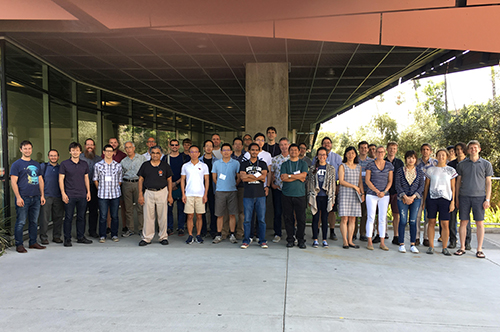Taiwan’s Accomplishment in ZTF Project: First Vatira Asteroid Was Discovered

The “TANGO” team co-organized by the Graduate Institute of Astronomy of NCU and the Institute of Astronomy of NTHU participates in the Zwicky Transient Facility (ZTF) led by the Caltech and discovered 2020 AV2—the first asteroid discovered to have an orbit completely within Venus’s orbit.
The “TANGO” team, co-organized by members from the Graduate Institute of Astronomy of National Central University (NCU) and the Institute of Astronomy of National Tsing Hua University (NTHU), participate in the Zwicky Transient Facility (ZTF) project, a wide astronomical survey led by the California Institute of Technology (Caltech). Early this year the TANGO team discovered 2020 AV2—the first asteroid discovered to have an orbit completely within Venus’s orbit. The orbit of 2020 AV2 was found eccentric; it had to rely on the gravitational perturbations to enter Venus’s orbit from any other location in the Solar System.
The Zwicky Transient Facility (ZTF) is an international collaborative astronomical project conducted by the Caltech. The project was launched in March 2018, applying wide-field cameras covering an area of 47 square degrees to conduct numerous astronomical surveys. With such unprecedented wide-field observations, the ZTF could capture and scan the starry outer space full of dynamicity.
The vast majority of asteroids in the Solar System orbit around the main asteroid belt, which is between Mars and Jupiter. Few asteroids’ orbits are entirely confined within Earth’s orbit; such asteroids are termed Atira asteroids. Based on such classification, 2020 AV2 was classified as a Vatira asteroid; that is, an asteroid whose orbit was completely within Venus’s orbit (the V in Vatira stands for Venus). The discovery of 2020 AV2 not only demonstrates the existence of Vatira asteroids but also further allows astronomers to have a better idea of small Solar System bodies (SSSB).
With support from the Ministry of Science and Technology (MOST) of Taiwan, the TANGO research team with members from the Graduate Institute of Astronomy of NCU and the Institute of Astronomy of NTHU joined the international ZTF project. The TANGO team focuses on the observations of small Solar System bodies, variable stars, supernovas, and the optical counterparts to gravitational waves. Meanwhile, the Twilight Program is an observation project developed by Dr. Quanzhi Ye at the University of Maryland in the U.S.A. and Dr. Wing-Huen Ip at the Graduate Institute of Astronomy of NCU.



